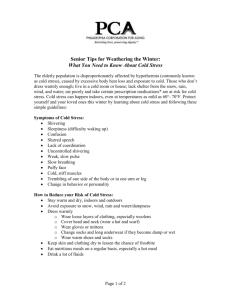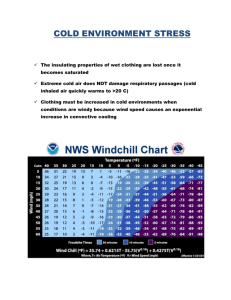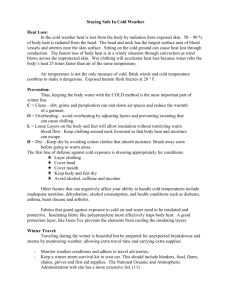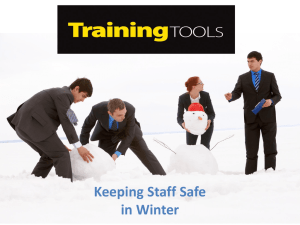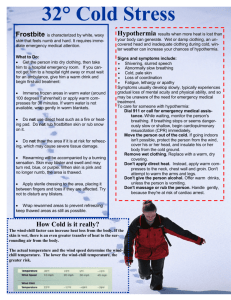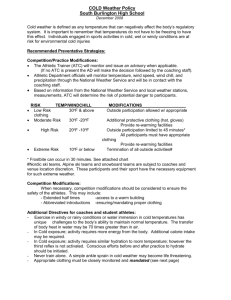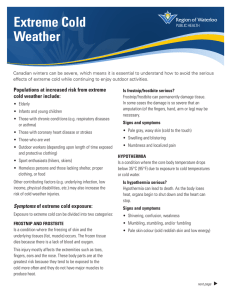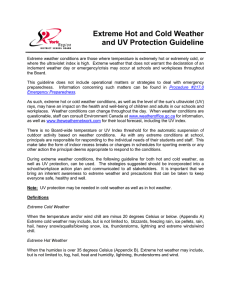- The signs of cold stress start with mild symptoms that... Mild Cold injury
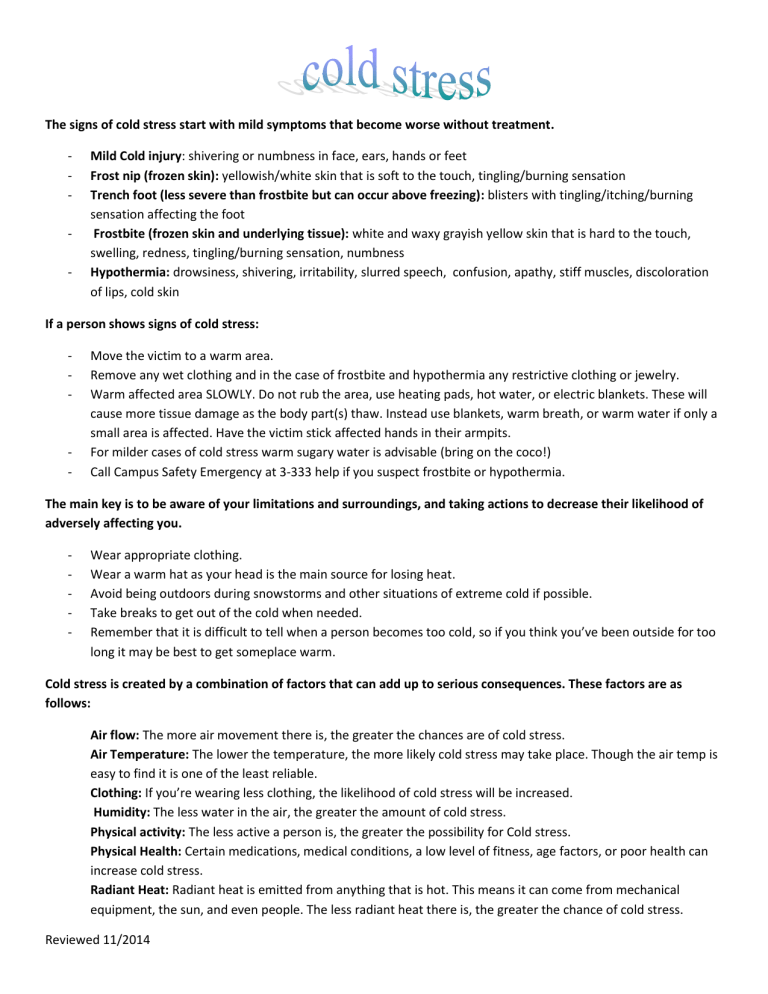
The signs of cold stress start with mild symptoms that become worse without treatment.
Mild Cold injury : shivering or numbness in face, ears, hands or feet
Frost nip (frozen skin): yellowish/white skin that is soft to the touch, tingling/burning sensation
Trench foot (less severe than frostbite but can occur above freezing): blisters with tingling/itching/burning sensation affecting the foot
Frostbite (frozen skin and underlying tissue): white and waxy grayish yellow skin that is hard to the touch, swelling, redness, tingling/burning sensation, numbness
Hypothermia: drowsiness, shivering, irritability, slurred speech, confusion, apathy, stiff muscles, discoloration of lips, cold skin
If a person shows signs of cold stress:
Move the victim to a warm area.
Remove any wet clothing and in the case of frostbite and hypothermia any restrictive clothing or jewelry.
Warm affected area SLOWLY. Do not rub the area, use heating pads, hot water, or electric blankets. These will cause more tissue damage as the body part(s) thaw. Instead use blankets, warm breath, or warm water if only a small area is affected. Have the victim stick affected hands in their armpits.
For milder cases of cold stress warm sugary water is advisable (bring on the coco!)
Call Campus Safety Emergency at 3-333 help if you suspect frostbite or hypothermia.
The main key is to be aware of your limitations and surroundings, and taking actions to decrease their likelihood of adversely affecting you.
Wear appropriate clothing.
Wear a warm hat as your head is the main source for losing heat.
Avoid being outdoors during snowstorms and other situations of extreme cold if possible.
Take breaks to get out of the cold when needed.
Remember that it is difficult to tell when a person becomes too cold, so if you think you’ve been outside for too long it may be best to get someplace warm.
Cold stress is created by a combination of factors that can add up to serious consequences. These factors are as follows:
Air flow: The more air movement there is, the greater the chances are of cold stress.
Air Temperature: The lower the temperature, the more likely cold stress may take place. Though the air temp is easy to find it is one of the least reliable.
Clothing: If you’re wearing less clothing, the likelihood of cold stress will be increased.
Humidity: The less water in the air, the greater the amount of cold stress.
Physical activity: The less active a person is, the greater the possibility for Cold stress.
Physical Health: Certain medications, medical conditions, a low level of fitness, age factors, or poor health can increase cold stress.
Radiant Heat: Radiant heat is emitted from anything that is hot. This means it can come from mechanical equipment, the sun, and even people. The less radiant heat there is, the greater the chance of cold stress.
Reviewed 11/2014
